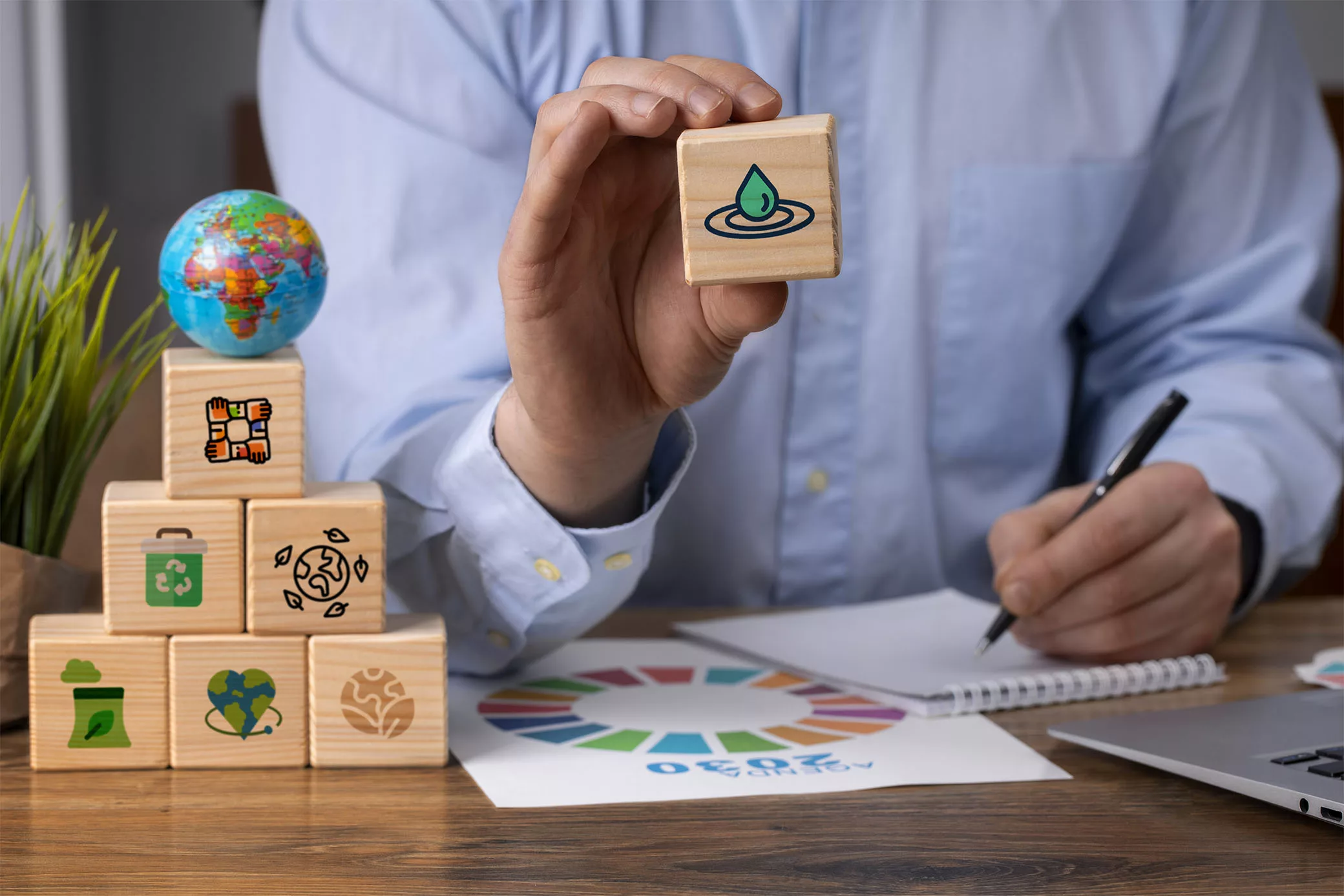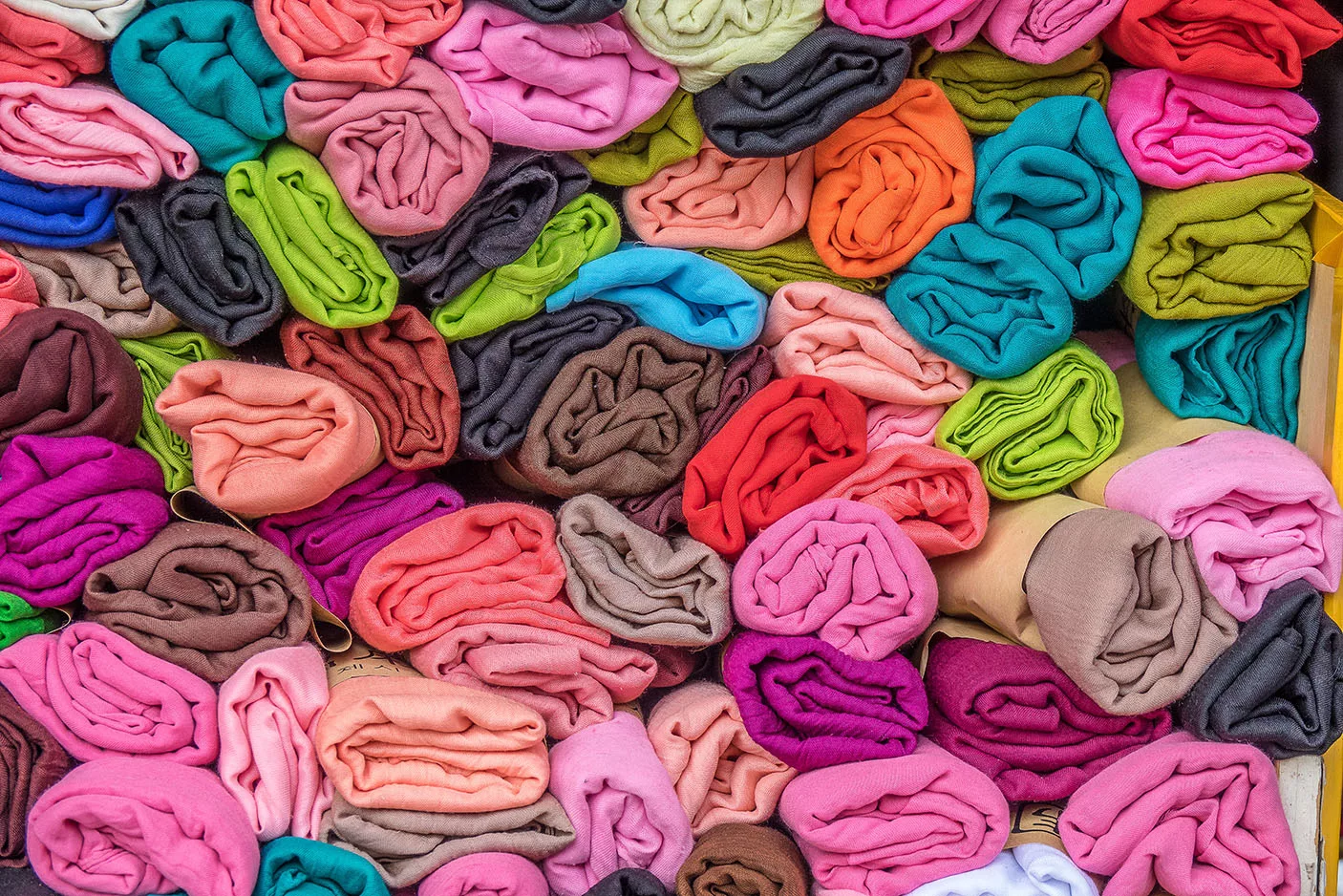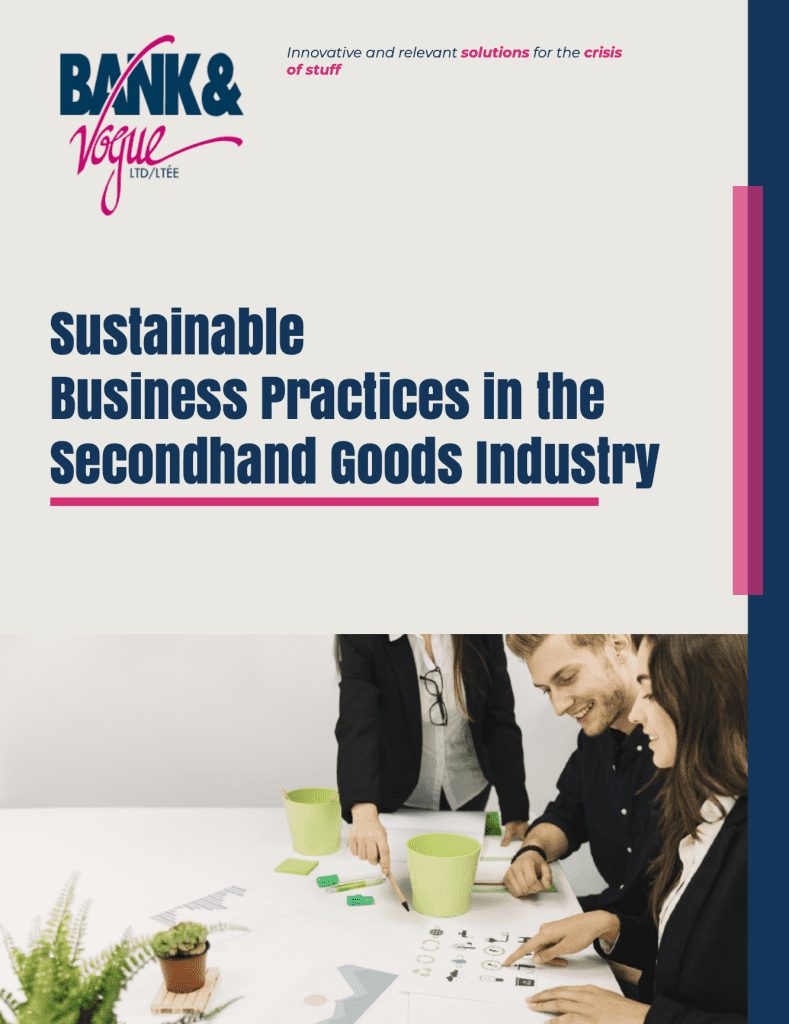Introduction
In an era where environmental consciousness is increasingly driving consumer behavior, the importance of sustainable business practices cannot be overstated. The secondhand goods industry stands at the forefront of this shift, offering a unique opportunity to reduce waste, conserve resources, and promote a circular economy. As a leader in the industry, Bank & Vogue is committed to fostering sustainability, not only within our operations but also across our network of wholesale suppliers and customers.
This white paper explores the critical role of sustainability in the secondhand goods industry, detailing eco-friendly practices, waste reduction strategies, and the environmental benefits of buying and selling second hand items. It aims to provide our partners with actionable insights to enhance their sustainability efforts, aligning with the broader goals of environmental stewardship and responsible business.


1. The Growing Importance of Sustainability
The global push for sustainability is reshaping industries across the board, and the secondhand goods sector is no exception. Consumers are increasingly prioritizing environmental impact in their purchasing decisions, and businesses that fail to adapt risk falling behind.
Sustainability is not just a trend but a fundamental shift towards a more responsible way of doing business. For the second- hand goods industry, this means reducing the environmental footprint associated with production, transportation, and disposal of goods. By embracing sustainability, businesses can not only meet the demands of eco-conscious consumers but also contribute to a healthier planet.
2. Eco-Friendly Practices in the Secondhand Goods Industry
Eco-friendly practices are the cornerstone of sustainable business operations. For wholesale suppliers and resellers in the secondhand goods industry, these practices can take many forms, including:
Sustainable Sourcing: Prioritizing goods that are made from eco-friendly materials or those that have been produced with minimal environmental impact. This includes selecting suppliers who adhere to ethical production standards and reducing reliance on non-renewable resources.
Energy Efficiency: Implementing energy-saving measures in warehouses, transportation, and offices. This could involve using energy-efficient lighting, optimizing transportation routes to reduce fuel consumption, and investing in renewable energy sources.
Waste Reduction: Minimizing waste throughout the supply chain, from reducing packaging materials to repurposing unsold goods. This also involves encouraging customers to return or recycle items, thereby extending the life cycle of products.
Water Conservation: Reducing water usage in the production and maintenance of second- hand goods. This can be achieved by partnering with suppliers who use water-efficient processes and educating customers on the importance of water conservation in garment care.


3. Reducing Waste: The Heart of Sustainability
Waste reduction is perhaps the most significant environmental benefit of the secondhand goods industry. By extending the life of products through resale, the industry plays a crucial role in diverting items from landfills and reducing the demand for new resources.
Circular Economy: The secondhand goods industry is a key player in the circular economy, where products are reused, repaired, and recycled rather than discarded. This model not only reduces waste but also lowers greenhouse gas emissions and conserves natural resources.
Product Lifespan Extension: By reselling items, businesses can extend the lifespan of products, ensuring that they are used to their full potential. This reduces the need for new products, thereby lowering the environmental impact associated with manufacturing.
Innovative Recycling: Encouraging the recycling of textiles and other materials can lead to innovative uses for these resources. For example, repurposing textiles into new products or using recycled materials in manufacturing can significantly reduce waste.
4. Environmental Benefits of Buying and Selling Second Hand
The environmental benefits of the second- hand goods industry are vast and multifaceted. By promoting the purchase and resale of secondhand items, businesses can help mitigate the environmental impact of consumerism.
Lower Carbon Footprint: Secondhand items typically require less energy and resources to produce than new items. By buying and selling used goods, businesses can contribute to a significant reduction in carbon emissions.
Resource Conservation: The production of new goods often involves the extraction and processing of raw materials, which can be environmentally damaging. By reusing existing products, the secondhand industry helps conserve these valuable resources.
Reduction in Pollution: Manufacturing new goods often results in pollution, including water, air, and soil contamination. By extending the life of products, the secondhand industry reduces the need for new production, thereby decreasing pollution levels.


5. Implementing Sustainable Practices: A Call to Action
For wholesale suppliers and customers in the secondhand goods industry, implementing sustainable practices is not just beneficial—it’s essential.
Education and Training: Providing education and training on sustainable practices can empower employees and customers to make environmentally responsible choices. This includes understanding the environmental impact of different materials, learning about waste reduction strategies, and promoting sustainable sourcing.
Partnerships and Collaboration:
Collaborating with like-minded organizations and suppliers can amplify sustainability efforts. By working together, businesses can share resources, knowledge, and innovations that drive the industry forward.
Continuous Improvement: Sustainability is an ongoing journey, not a destination. Businesses should continuously assess and improve their practices, setting ambitious goals and tracking progress to ensure they remain at the forefront of the industry.
Conclusion
Sustainability is the future of the secondhand goods industry. By adopting eco-friendly practices, reducing waste, and promoting the environmental benefits of buying and selling second hand items, businesses can not only meet the demands of today’s consumers but also contribute to a more sustainable world.
At Bank & Vogue, we are proud to lead by example and support our partners in their sustainability journey. Together, we can create a more responsible and environmentally friendly secondhand goods industry, benefiting both people and the planet.








